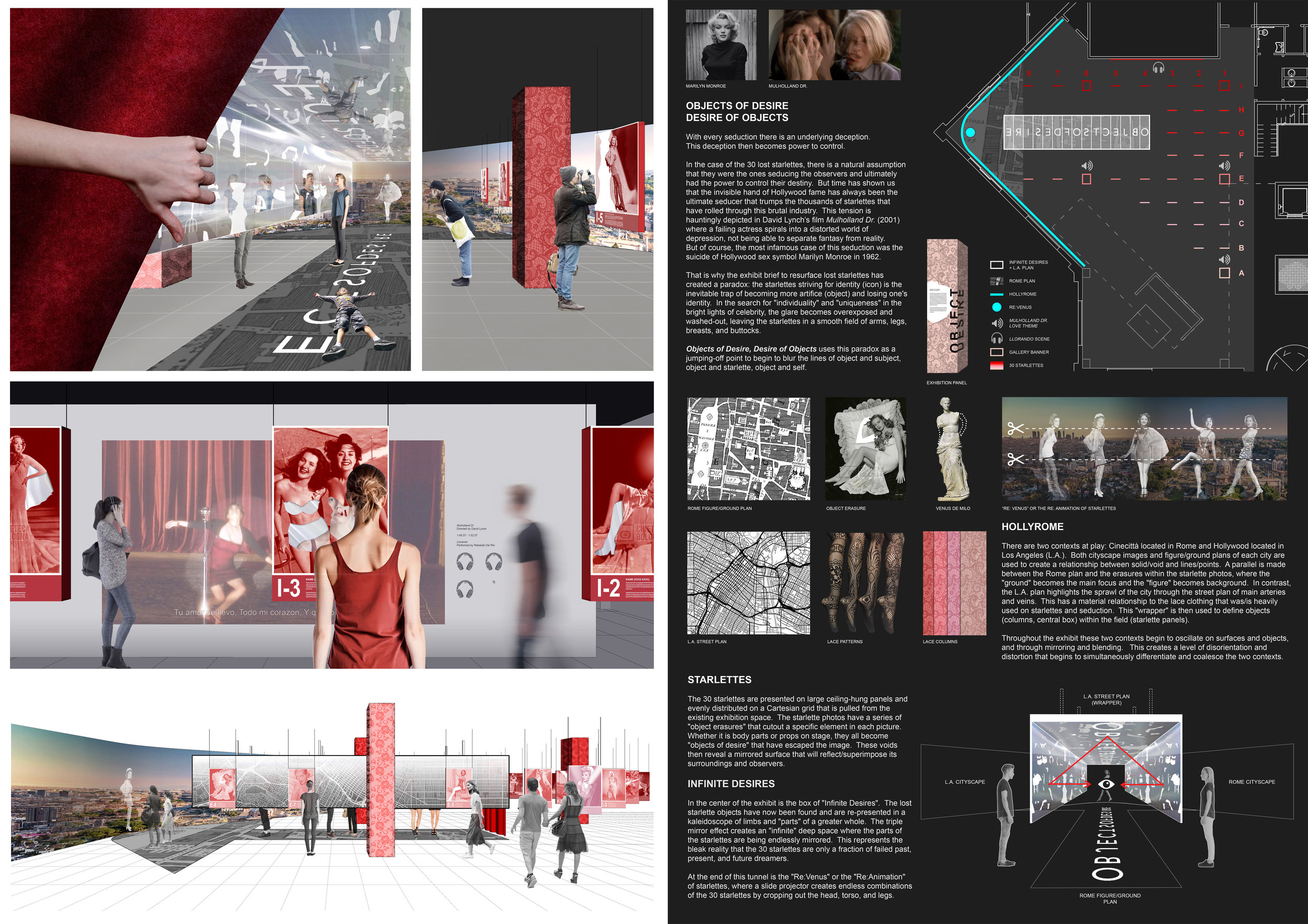OBJECTS OF DESIRE
Competition
Seduction Pavilion Competition
Autumn 2018
OBJECTS OF DESIRE OF OBJECTS
With every seduction there is an underlying deception.
This deception then becomes power to control.
In the case of the 30 lost starlettes, there is a natural assumption that they were the ones seducing the observers and ultimately had the power to control their destiny. But time has shown us that the invisible hand of Hollywood fame has always been the ultimate seducer that trumps the thousands of starlettes that have rolled through this brutal industry. This tension is hauntingly depicted in David Lynch’s film Mulholland Dr. (2001) where a failing actress spirals into a distorted world of depression, not being able to separate fantasy from reality. But of course, the most infamous case of this seduction was the suicide of Hollywood sex symbol Marilyn Monroe in 1962.
That is why the exhibit brief to resurface lost starlettes has created a paradox: the starlettes striving for identity (icon) is the inevitable trap of becoming more artifice (object) and losing one's identity. In the search for "individuality" and "uniqueness" in the bright lights of celebrity, the glare becomes overexposed and washed-out, leaving the starlettes in a smooth field of arms, legs, breasts, and buttocks.
Objects of Desire, Desire of Objects uses this paradox as a jumping-off point to begin to blur the lines of object and subject, object and starlette, object and self.
HOLLYROME
There are two contexts at play: Cinecittà located in Rome and Hollywood located in Los Angeles (L.A.). Both cityscape images and figure/ground plans of each city are used to create a relationship between solid/void and lines/points.
A parallel is made between the Rome plan and the erasures within the starlette photos, where the "ground" becomes the main focus and the "figure" becomes background. In contrast, the L.A. plan highlights the sprawl of the city through the street plan of main arteries and veins. This has a material relationship to the lace clothing that was/is heavily used on starlettes and seduction. This "wrapper" is then used to define objects (columns, central box) within the field (starlette panels).
Throughout the exhibit these two contexts begin to oscillate on surfaces and objects, and through mirroring and blending. This creates a level of disorientation and distortion that begins to simultaneously differentiate and coalesce the two contexts.
STARLETTES
The 30 starlettes are presented on large ceiling-hung panels and evenly distributed on a Cartesian grid that is pulled from the existing exhibition space. The starlette photos have a series of "object erasures" that cutout a specific element in each picture. Whether it is body parts or props on stage, they all become "objects of desire" that have escaped the image. These voids then reveal a mirrored surface that will reflect/superimpose its surroundings and observers.
INFINITE DESIRES
In the center of the exhibit is the box of "Infinite Desires". The lost starlette objects have now been found and are re-presented in a kaleidoscope of limbs and "parts" of a greater whole. The triple mirror effect creates an "infinite" deep space where the parts of the starlettes are being endlessly mirrored. This represents the bleak reality that the 30 starlettes are only a fraction of failed past, present, and future dreamers.
At the end of this tunnel is the "Re:Venus" or the "Re:Animation" of starlettes, where a slide projector creates endless combinations of the 30 starlettes by cropping out the head, torso, and legs.




